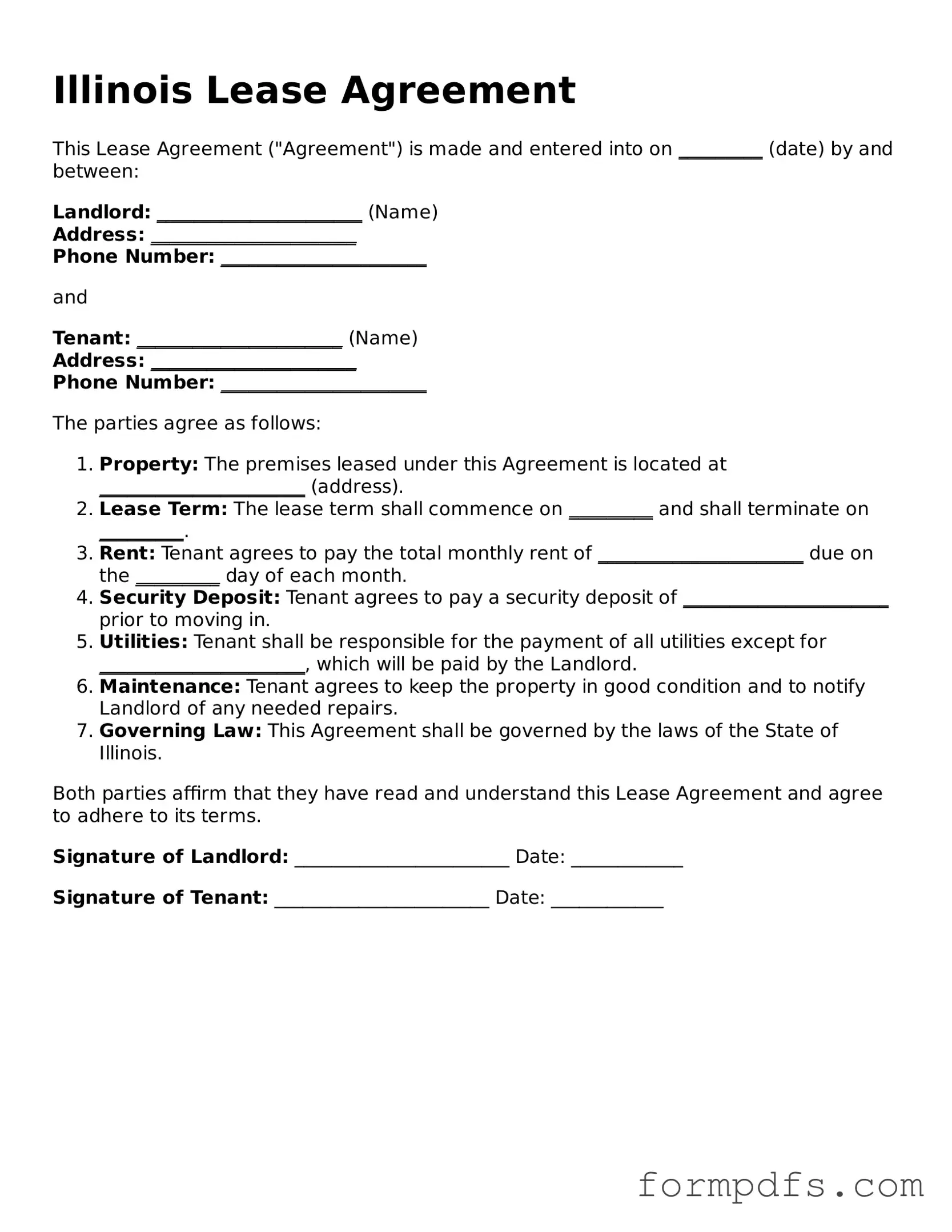What is an Illinois Lease Agreement?
An Illinois Lease Agreement is a legal document that outlines the terms and conditions between a landlord and a tenant for renting a residential property in Illinois. It specifies the rights and responsibilities of both parties, including rent amount, duration of the lease, and maintenance obligations.
What should be included in the Lease Agreement?
The agreement should include essential details such as the names of the landlord and tenant, property address, lease term (start and end dates), rent amount, payment due dates, security deposit information, and rules regarding pets or smoking. It may also cover maintenance responsibilities and procedures for terminating the lease.
How long is a typical lease term?
Lease terms can vary. Most commonly, they are for one year, but they can also be month-to-month or for shorter or longer periods. The specific duration should be clearly stated in the lease agreement.
Can a lease be terminated early?
Yes, a lease can be terminated early, but it usually requires mutual agreement between the landlord and tenant. There may be penalties or specific conditions outlined in the lease regarding early termination. It's important to review these details before making any decisions.
What is a security deposit?
A security deposit is an amount of money that a tenant pays to the landlord before moving in. It acts as a safeguard for the landlord against potential damages or unpaid rent. In Illinois, there are specific laws about how much can be charged and how it should be handled after the lease ends.
Are there any restrictions on lease agreements in Illinois?
Yes, lease agreements in Illinois must comply with state laws. For example, they cannot include illegal terms, such as waiving a tenant’s right to sue for habitability issues. Additionally, landlords must follow specific rules regarding security deposits and eviction processes.
What happens if a tenant does not pay rent?
If a tenant fails to pay rent, the landlord has the right to begin eviction proceedings after providing proper notice. The lease agreement typically outlines the notice period required before taking further action. It's crucial for tenants to communicate with their landlord if they encounter financial difficulties.
Can lease agreements be modified?
Yes, lease agreements can be modified, but any changes must be agreed upon by both the landlord and tenant. It is best to document any modifications in writing to avoid misunderstandings in the future.
What should a tenant do if they have a dispute with their landlord?
If a tenant has a dispute with their landlord, the first step is to communicate directly and try to resolve the issue. If that doesn't work, tenants can seek mediation services or consult with a legal professional for advice on their rights and options.
